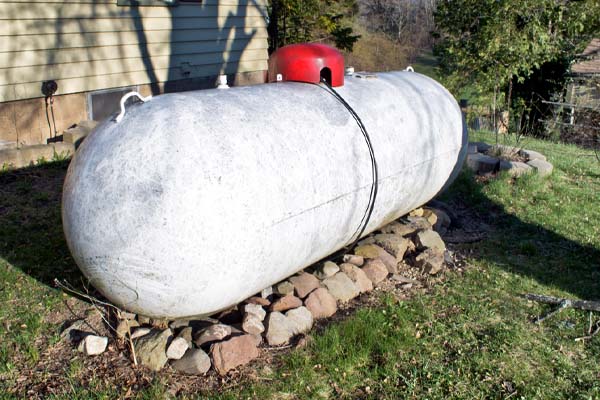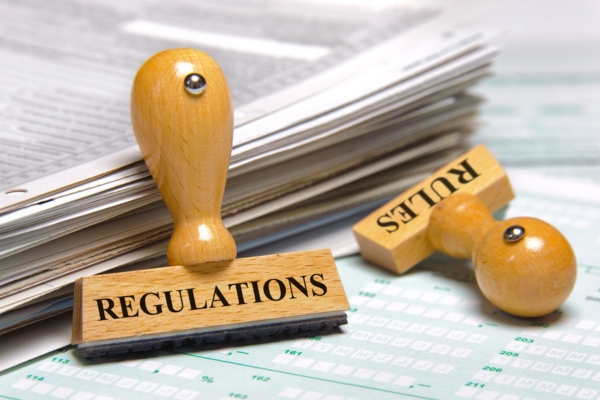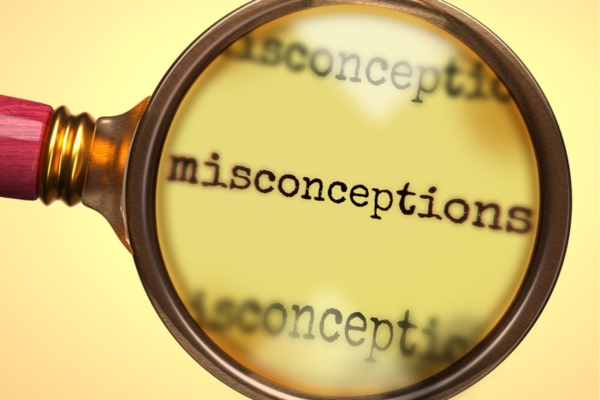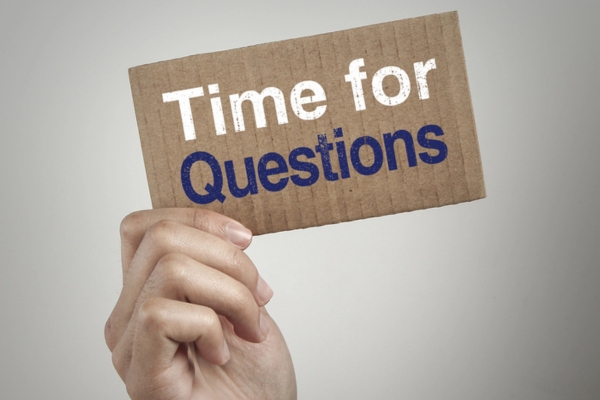Contents
- 1 What is the 80% Fill Rule & Propane Tank Levels?
- 2 How to Check Your Propane Tank Level
- 3 Tips for Managing Propane Supply
- 4 Common Misconceptions About the 80% Fill Rule
- 5 Common Propane FAQs
- 5.1 How Often Should I Check The Propane Level In My Tank?
- 5.2 What Should I Do If I Smell Gas Near My Propane Tank?
- 5.3 Is It Safe To Store Other Items Near My Propane Tank?
- 5.4 How Should Propane Tanks Be Positioned When Installed Outside?
- 5.5 What Precautions Should Be Taken During Extreme Weather Conditions For Propane Tanks?
- 6 Conclusion
- 7 Contact Wilcox Energy for Trusted Propane Delivery Services
Updated: 10/14/2024
Propane is a widely utilized fuel for heating homes, cooking meals, and powering appliances. One critical standard in the use of propane tanks and propane tank levels is the 80% fill rule. This guideline promotes efficiency and ensures safety. Wilcox Energy strictly adheres to this rule, demonstrating its commitment to both customer satisfaction and safety.
This article explores the rationale behind the 80% fill rule and its benefits, offering Wilcox Energy customers and all propane users a deeper understanding of its importance.
What is the 80% Fill Rule & Propane Tank Levels?

The 80% fill rule requires propane tanks to be filled only to 80% capacity, ensuring there’s always space left to prevent overfilling. This guideline is essential for safely managing propane’s expansion and contraction with temperature changes.
By following this rule, Wilcox Energy accommodates the significant volume increase propane experiences when heated, preventing unsafe pressure buildups inside the tank. This careful management preserves the tank’s structural integrity and the safety of the surrounding area.
Ensure a Cozy Winter! Contact Wilcox Energy today to guarantee reliable and caring propane service throughout the cold months. Call now!
Science Behind Propane Expansion
Like many gases, propane is subject to changes in volume when the temperature fluctuates. At lower temperatures, propane contracts, taking up less space. On the other hand, it expands while at higher temperatures. This behavior is a physical property inherent to most gases, governed by the principles of thermodynamics, which dictate that gases expand when heated and contract when cooled.
The 80% fill rule is specifically designed to accommodate propane’s expansive nature. By limiting the fill capacity to 80%, the tank has sufficient space to allow for this expansion without causing an increase in internal pressure that could compromise tank integrity. This precaution ensures that temperature changes, common in various environments where propane tanks are used, do not pose a safety risk.
Safety Implications & Propane Gas

Overfilling a propane tank beyond its 80% capacity can lead to several potential hazards. Insufficient room for expansion increases the risk of excessive pressure buildup, which can cause leaks or even tank ruptures. Such incidents pose immediate physical dangers and elevate the risk of fires and explosions, particularly in areas where ignition sources are present.
Propane tanks are equipped with specific safety features designed to prevent overfilling. These include the fixed liquid level gauge, which indicates the maximum safe fill level, and overfill prevention devices (OPDs) that automatically stop the filling process once the tank reaches its capacity limit.
Wilcox Energy rigorously follows these safety protocols, ensuring that each tank is filled safely and effectively. By adhering to these guidelines, Wilcox Energy prioritizes the safety and well-being of its customers, maintaining a high standard of care and responsibility.
Looking for Reliable Propane Delivery? Get in touch with Wilcox Energy now to experience uninterrupted home comfort.
Operational Efficiency
Adhering to the 80% fill rule enables Wilcox Energy to deliver propane reliably and safely. It ensures that tanks are always prepared for temperature-induced volume changes, avoiding supply disruptions. Proper fill levels also enhance the performance of propane-powered appliances, which operate most efficiently within designed safety limits.
Wilcox Energy’s commitment to this rule is reflected in its fast and reliable delivery service. This ensures that customers receive their propane on time and in the safest manner possible, optimizing appliance functionality and overall energy efficiency.
Legal and Regulatory Aspects

The 80% fill rule is anchored in federal and state regulations. This includes the guidelines the National Fire Protection Association (NFPA 58) set forth, commonly known as the Liquefied Petroleum Gas Code. This code mandates specific handling, storage, and distribution practices for propane to ensure safety across the board.
Adhering to such regulations is crucial for safety and compliance purposes. Non-conformance can lead to severe legal and financial consequences. By rigorously following these rules, providers like Wilcox Energy ensure the operational safety of their tanks and protect themselves and their customers from legal liabilities.
Stay Warm Without Worry! Schedule your next propane delivery with us and enjoy the peace of mind that comes with dependable service.
How to Check Your Propane Tank Level
Regularly check the level in your tank to manage your propane supply effectively and avoid running out unexpectedly.
- Visual Inspection: Start by locating the gauge on your propane tank, typically under the lid or on top. The gauge shows numbers from 0 to 100, indicating the percentage of the tank’s capacity that is filled. For example, a reading of 20% suggests it’s time to schedule a refill.
- Calculation: To calculate your propane level, multiply the gauge reading by your tank’s total capacity. For example, if your tank holds 500 gallons and the gauge reads 40%, you have 200 gallons left (0.40 x 500). Regular checks help you manage your supply and prevent shortages.
Tips for Managing Propane Supply
Regularly monitoring propane tank levels is crucial to avoid unexpected shortages, especially during high-demand periods like winter. Best practices include checking the gauge weekly and keeping a log of readings to predict usage patterns more accurately. It’s advisable to schedule deliveries when the tank reaches 30% capacity, which provides a buffer period for delivery and avoids the risk of completely depleting your supply.
Partnering with Wilcox Energy enhances the management of your propane needs by offering reliable monitoring and delivery services. Signing up for automatic propane delivery with Wilcox Energy ensures consistent monitoring and refilling of your tank before it falls below a critical level. This service eliminates the worry of running out of fuel. It optimizes the efficiency and safety of your propane usage, providing peace of mind and continuous comfort for your home or business.
Trustworthy Propane Delivery! Call Wilcox Energy today to learn how our dedicated service can enhance your winter heating experience.
Common Misconceptions About the 80% Fill Rule

Many consumers have misconceptions about the 80% fill rule for propane tanks, which can lead to confusion about how propane delivery and usage work. Here are some common myths and the truths behind them:
- Myth – A tank filled to only 80% is underfilled by the supplier: The 80% fill rule is a safety measure to allow for propane expansion due to temperature changes. It is not underfilling but a critical standard to ensure safety and efficiency.
- Myth – The 80% rule means my propane will run out faster. The fill rule does not affect how quickly you use propane; it only ensures there is space for safe expansion. Your consumption rate is determined by appliance use, not tank capacity.
- Myth – Tanks can safely exceed the 80% mark during colder months: Regardless of the season, exceeding 80% can lead to dangerous pressure buildups as temperatures rise, posing safety risks.
- Myth – Checking the tank level is unnecessary with the 80% rule in place: Regularly checking your tank level is crucial to avoid running out of propane, especially during peak usage periods. The 80% rule does not replace the need for regular monitoring.
Keep Your Home Warm! Reach out to Wilcox Energy to discuss your propane needs and discover how we can keep you cozy all winter long.
Common Propane FAQs

Below are some common questions about propane to help clarify common concerns and provide valuable insights.
How Often Should I Check The Propane Level In My Tank?
It’s a good practice to check your propane tank level monthly, especially during periods of high usage. Regular monitoring helps avoid unexpected shortages and ensures you schedule refills promptly. Many prefer the convenience of signing up for automatic propane deliveries as it removes the task of monitoring propane tank levels and calling with enough time to schedule a propane gas delivery.
What Should I Do If I Smell Gas Near My Propane Tank?
If you smell gas, it’s essential to act quickly. Avoid creating sparks or open flames. Leave the area immediately and call your propane provider or the fire department from a safe distance to report the leak.
Is It Safe To Store Other Items Near My Propane Tank?
It is recommended that you keep the area around your propane tank clear of other items, especially flammable materials. This helps ensure safety and easy access for inspections and refills.
How Should Propane Tanks Be Positioned When Installed Outside?
Propane tanks should be installed on a non-flammable, solid surface such as concrete and positioned away from the home’s main structure. They should also be easily accessible for filling and inspections and clear from potential hazards like high-traffic areas or drainage systems.
What Precautions Should Be Taken During Extreme Weather Conditions For Propane Tanks?
During extreme weather, ensure that propane tank fittings and valves are protected against debris and ice, which could damage connections or block pressure relief valves. Having a clear path to your tank is also advisable. This ensures that delivery and emergency services can access it without obstruction.
Conclusion
The 80% fill rule is essential for ensuring propane use’s safety, efficiency, and regulatory compliance. Propane tanks accommodate necessary expansion and minimize risks by adhering to this guideline. Wilcox Energy is committed to upholding these standards, offering expert guidance and reliable propane delivery services. For any questions about propane use or to schedule a delivery that meets safety and compliance standards, do not hesitate to contact Wilcox Energy. Your safety and satisfaction are our top priorities.
Contact Wilcox Energy for Trusted Propane Delivery Services
Wilcox Energy is dedicated to ensuring that homes and businesses throughout southern shoreline Connecticut remain warm and comfortable with our reliable propane delivery services. We prioritize delivering high-quality propane quickly and efficiently, ensuring you experience the warmth you need without any hassle. Our commitment to superior service means offering competitive rates and transparent, straightforward services, consistently placing your comfort first.
Choosing Wilcox Energy means partnering with a dependable provider for your propane needs. With a reputation for consistent, dedicated service and a strong emphasis on customer satisfaction, Wilcox Energy has become a trusted name in the community. We are here to meet all your heating needs, keeping your environment cozy and inviting all winter long. Contact us today to get started!
Call us today to learn more about our products and services. We provide free, in-home estimates. Click the link to view our service area.
For more information about our propane deliveries or HVAC services, contact Wilcox Energy. You can click here to contact us, or you can call us at (860) 399-6218. We offer a full line of affordable and trusted home comfort services. Click the link to view our propane service area.

Related Articles:
- Dive into Warmth: The Benefits of Propane Pool Heating Systems
- Can I Landscape Around My Propane Tank?
- Can I Paint My Home Propane Tank?
- Exploring the Impact of High Summer Temperatures on Propane
- Understanding Propane: A Comprehensive Guide for Beginners
- Propane Myths Busted: Separating Fact from Fiction
